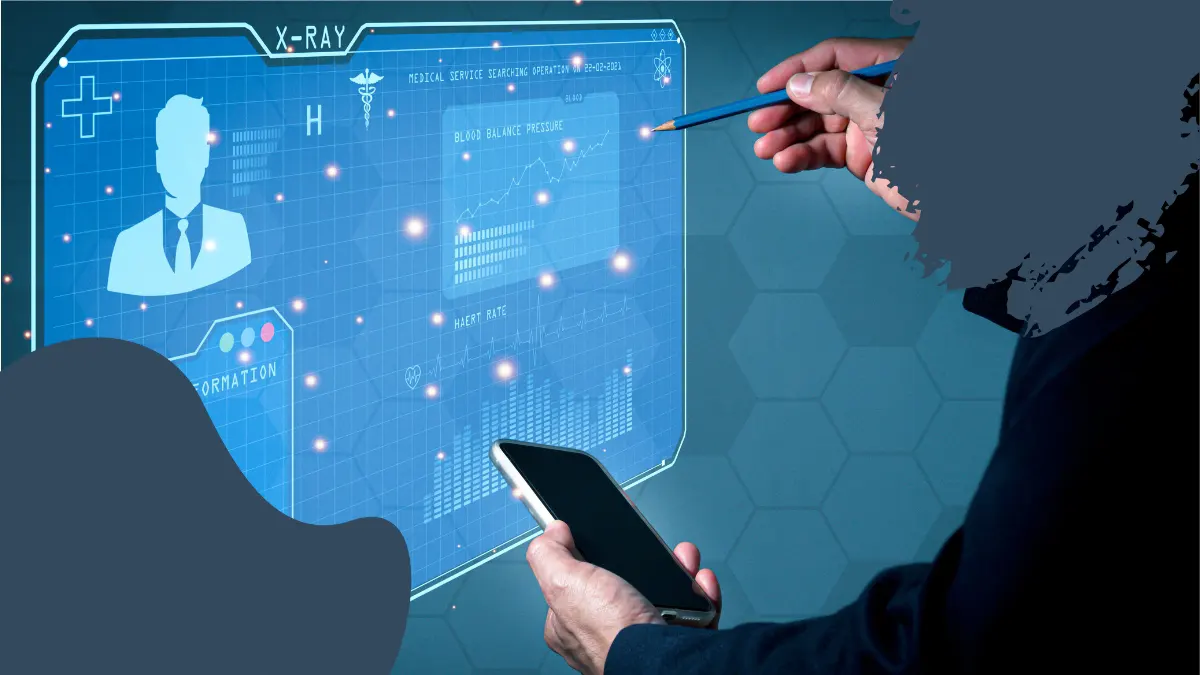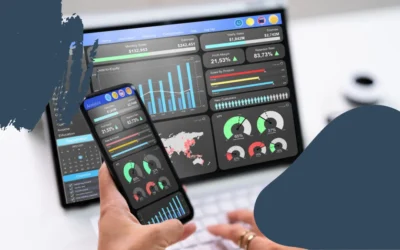In the past, public relations (PR) focused on building and maintaining relationships with journalists and traditional media through press conferences, releases, and in-person events. With the digital revolution, however, the way brands communicate, build reputation, and get discovered has changed radically.
The rise of digital channels—social networks, blogs, online media, and video platforms—rewrote the rules. Today, brands no longer depend exclusively on traditional outlets to gain visibility: the conversation happens across many spaces, and consumers can discover brands via search engines, social recommendations, content hubs, voice search, and even AI-generated answers.
Digital presence that drives discovery
30.9% of internet users aged 16–64 discover new brands through search engines, according to a GWI survey—reinforcing the importance of strong digital strategies to win visibility and relevance where audiences are already looking for solutions.
In this new landscape, Digital Public Relations become an essential pillar for standing out in an information-saturated environment. More than communicating, brands must connect, build trust, and be discovered at key moments of search and interaction—whether in traditional search results, AI-generated answers, or voice queries.
This guide shows you how to design an integrated strategy that boosts your brand’s visibility, credibility, and reputation across today’s digital ecosystem.
What is digital public relations?
Digital Public Relations are the natural evolution of traditional PR, adapted to today’s communication ecosystem. The goal remains the same—build and sustain a strong, positive reputation—but the tactics, channels, and metrics have changed radically.
In essence, digital PR combines strategic storytelling, online media visibility, social presence, content marketing, SEO, and data analysis to connect with audiences in a more targeted and relevant way. The aim is not only media coverage, but also brand discoverability across the spaces where people now inform themselves, search, and decide.
With this approach, brands unlock valuable opportunities—from earned mentions and influencer collaborations to qualified traffic and conversions from strategic searches—supported by digital tools that measure impact in real time and enable continuous optimization.
9 key elements to design a digital PR strategy
A digital PR strategy is not improvised—it requires vision, craft, and adaptability. These nine elements should guide every effective execution:
1. Set measurable strategic objectives
Every strategy starts with why. Are you strengthening reputation, increasing discoverability in search, attracting qualified traffic, or becoming a category thought leader?
Set concrete goals with clear indicators—visits, mentions, referral traffic, engagement, or conversions—to evaluate results.
TIP
Align objectives with actionable KPIs from the start to avoid disconnected tactics with little real impact.
2. Know your target audience deeply
You can’t communicate effectively if you don’t know whom you’re speaking to. Map interests, digital habits, preferred formats, consumption channels, and pain points.
A well-segmented audience lets you craft personalized content, choose the right outlets, and increase message resonance.
TIP
Use social listening and web behavior analytics to build dynamic user profiles.
3. Implement a solid content marketing strategy
Content marketing means creating and distributing valuable, relevant, consistent content to attract, educate, convert, and retain specific audiences throughout their decision journey. It’s relational, not promotional—designed to build trust, credibility, and positioning.
In digital PR, content has a dual role: convey authority and improve discoverability. From blog posts and interviews to white papers, videos, and downloadable guides, each piece should address real interests and specific searches. Ideally, content should be optimized—with relevant keywords, strategic internal links, and clear structure—so it’s easy for both people and search engines to understand.
Optimized content also increases the chances of earning backlinks—signals of trust and authority to search engines. The more quality backlinks you earn, the higher your visibility and rankings.
Crucially, well-structured, optimized content is more likely to be discovered via typed queries, voice search, or AI-generated answers—all key channels in today’s ecosystem.
TIP
Prioritize evergreen content that remains relevant for weeks or months to support core brand messages and sustain long-term discoverability.
4. Optimize for search engines (on-page SEO)
Great writing isn’t enough—your content must be technically legible to Google and other platforms. Use relevant keywords, hierarchical headings, strategic linking, and fast load times. On-page SEO is a direct lever for improving organic discoverability.
TIP
Build an interconnected topic cluster architecture (a pillar page linking to related subtopics) to dominate key themes and rank for search intent.
5. Distribute content strategically (off-page SEO)
Publishing isn’t enough: your content must circulate, resonate, and multiply. Choose industry-relevant outlets and blogs, participate in niche forums, post on social, and do outreach—proactively pitch editors, journalists, and creators with valuable material.
TIP
Target outlets with strong domain authority to impact both search positioning and brand reputation.
6. Build purpose-driven link building
Link building is earning inbound links (backlinks) from other websites to yours. Search engines treat these as votes of confidence: the more credible sites that reference you, the more authority and discoverability your brand gains.
Not every link helps—focus on relevant, reputable sites aligned with your industry and audience. This improves rankings and visibility in key channels.
TIP
Publish authoritative, optimized assets—original research, useful infographics, robust guides—with relevant keywords and internal links. You’ll increase the likelihood of natural, sustained linking.
7. Activate and amplify through social media
Social platforms aren’t just distribution channels; they’re essential spaces to surface content, build reputation, and spark conversation. Their value in digital PR lies in amplifying messages, generating engagement, connecting with influencers, and listening to market perception.
Each platform serves a role: LinkedIn for professional authority, Instagram and TikTok for visual and emotional storytelling, and X (formerly Twitter) for real-time conversation.
A smart strategy leverages each channel’s strengths so published content boosts discoverability and reinforces your brand narrative.
TIP
Use social listening to spot hot topics, content opportunities, overall sentiment, and early signs of potential issues.
8. Build relationships with digital opinion leaders
Digital PR now depends not only on news outlets but also on people who shape conversation, credibility, and community online—digital journalists, bloggers, analysts, niche experts, and respected creators. They’re strategic allies to amplify key messages, influence perception, and strengthen discoverability.
Collaboration helps your narrative travel through legitimate voices to segmented, affinity-based audiences—creating mutual value: quality content, access to relevant communities, and trust transfer.
These alliances aren’t about massive reach; they’re about credibility, consistency, and shared values—often built organically through interviews, co-authorships, exclusive data sharing, or participation in events and editorial projects.
TIP
Identify opinion leaders already discussing your core themes. Build long-term relationships around collaboration, useful content, and coherent narrative—their endorsement can significantly impact positioning and digital reputation.
9. Listen, measure, and adjust with data
A digital PR strategy can’t rely on intuition alone. As Philip Kotler says, “what gets measured gets improved.” Measurement should focus not on vanity metrics but on indicators that reflect impact, reputation, and discoverability—from referral traffic, engagement, backlinks, and keyword rankings to share of voice, reach, tone, mentions, and penetration in key audiences.
Real value emerges when you combine digital and traditional metrics into an integrated, strategic read—so you can double down on what works, correct course early, and anticipate risks.
TIP
Use tools like Google Analytics, Brandwatch, or Semrush (all with AI-enhanced capabilities) to gather actionable data—and, more importantly, turn it into decisions that strengthen reputation, discoverability, and business impact.
Benefits of digital public relations
A well-structured digital PR strategy can significantly change how your brand is perceived, discovered, and remembered online. It helps you:
- Increase discoverability by leveraging digital channels and search to appear before the right audiences precisely when they’re exploring solutions like yours.
Discoverability means a brand’s ability to appear visibly, contextually, and timely in the channels where its audience seeks information, asks questions, or receives recommendations. - Improve online reputation by building credibility through valuable content, media coverage, and strategic mentions on authoritative sites.
- Drive relevant traffic via SEO, link building, and placements in pertinent outlets—fueling more interactions and potential conversions.
- Create durable value with evergreen content (articles, interviews, case studies) that keeps generating interest and engagement long after publication.
- Strengthen audience connection through social platforms, influencer marketing, and content hubs that enable listening, response, and genuine relationships.
- Enable continuous evolution by monitoring results, identifying what works, and adapting—making your brand’s communication more agile, relevant, and aligned with digital expectations.
Together, these benefits not only enhance your brand’s digital positioning but also help you communicate with purpose and build a coherent, sustainable presence.
Integrated communication and the unified media ecosystem
Digital disruption has transformed how brands communicate, position themselves, and earn trust. Effective strategy can no longer rely on a single channel or siloed efforts. The key is to integrate, coordinate, and amplify under a shared strategic framework: the Unified Media Ecosystem.
This approach connects four media types, each with distinct functions and value in a digital PR strategy:
- Earned media
Editorial coverage, interviews, blog mentions, reviews, and third-party recommendations.
Delivers credibility, reputation, and organic visibility through trusted external validation. - Owned media
Website, corporate blog, downloadable resources, newsletters, and brand social channels.
Offers full message control and is essential for thought leadership and useful, multimedia content in the formats your audience prefers—articles, videos, infographics, podcasts, visual or interactive guides. - Shared media
Social interactions, community engagement, co-created content, partnerships with digital voices.
Generates emotional connection, participation, and narrative amplification in authentic environments. - Paid media
Digital ads, sponsored content, search and social buys.
Used when you need to scale visibility quickly or support specific campaigns.
When these work in alignment, you create a coherent, measurable ecosystem that:
- Boosts brand discoverability by being present where audiences already are.
- Reinforces consistent messaging across touchpoints.
- Improves ROI by optimizing resources versus isolated, disconnected campaigns.
More than an operating model, the Unified Media Ecosystem is a mindset: prioritize integration, consistency, and purpose over fragmented tactics—so you can adapt to audience preferences, gain organizational efficiency, and maximize strategic impact.
TIP
Evaluate how each channel contributes to objectives. Smart integration compounds results far beyond the sum of individual efforts.
Traditional and digital PR: a strategic pairing
In the digital era, brands don’t choose between traditional and digital—they need both to build a solid, relevant, trustworthy reputation. Traditional and digital PR don’t compete; they complement each other.
Traditional PR remains fundamental for editorial credibility, print/radio/TV coverage, and strong spokesperson platforms—especially to reach decision-makers, established outlets, and broad audiences.
Digital PR reaches segmented audiences, amplifies messaging online, adapts content to multimedia formats, and enhances discoverability across search, social, and specialized platforms.
Combined, they enable you to:
- Tell powerful stories from multiple angles and formats for different generations and consumption styles.
- Expand reach and frequency without duplicating effort—reinforcing a common narrative across channels.
- Maximize measurable outcomes in visibility, reputation, coverage, and organic positioning.
TIP
Think of PR as interlocking gears: traditional positions, digital amplifies—and together they sustain your brand in a complex, ever-evolving media landscape.
Digital public relations: the future belongs to purposeful communicators
Digital PR is no longer optional—it’s an essential competency for brands that want to be relevant, trusted, and visible in an information-saturated environment.
Technological acceleration—AI, voice search, and personalization algorithms—is redefining how audiences discover, consume, and share content. Brands that build a coherent, useful, and trustworthy presence in the spaces where their audiences already learn and decide will stand apart.
The future of PR depends less on tools and more on the strategic ability to integrate media, narratives, and spokespersons within a unified, adaptable, user-centric ecosystem.
It’s not just about being seen—it’s about being discovered with intent, remembered with clarity, and shared with confidence.
Brands that invest today in reputation, authentic connection, and purposeful communication will lead tomorrow’s conversation.
Ready to elevate your brand’s digital presence and credibility with PR that drives real impact?
FAQs
1. Who is a digital PR professional?
A digital PR professional is a strategic communicator who builds and manages a brand’s online reputation. They combine PR, content marketing, SEO, and data analysis to strengthen visibility and trust; collaborate with media, creators, and influencers; monitor perceptions; and optimize messaging to connect with relevant audiences.
2. What advantages do digital-media public relations offer?
Digital PR delivers immediate reach, precise segmentation, and measurable outcomes. It enables direct audience interaction, boosts organic positioning, and strengthens brand reputation. It also adapts quickly to trends and leverages real-time data to optimize strategy and deepen connection and trust.
3. What is PR on social media?
Social PR blends reputation management and strategic communication with digital tools. It aims to build active communities, amplify key messages, and generate trust through coherent, authentic content. It involves monitoring, agile response, and collaboration with opinion leaders to strengthen visibility and credibility in social environments.





